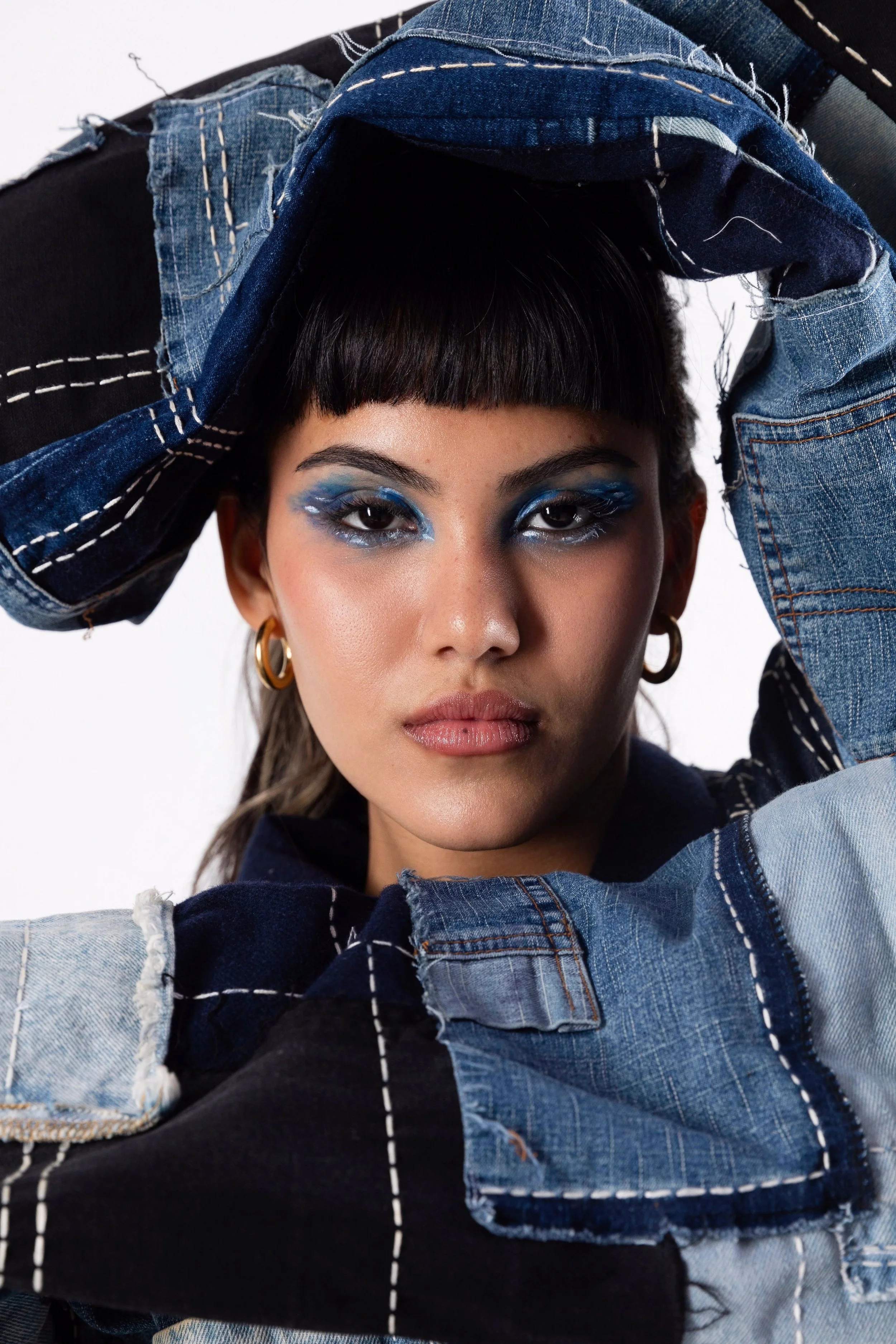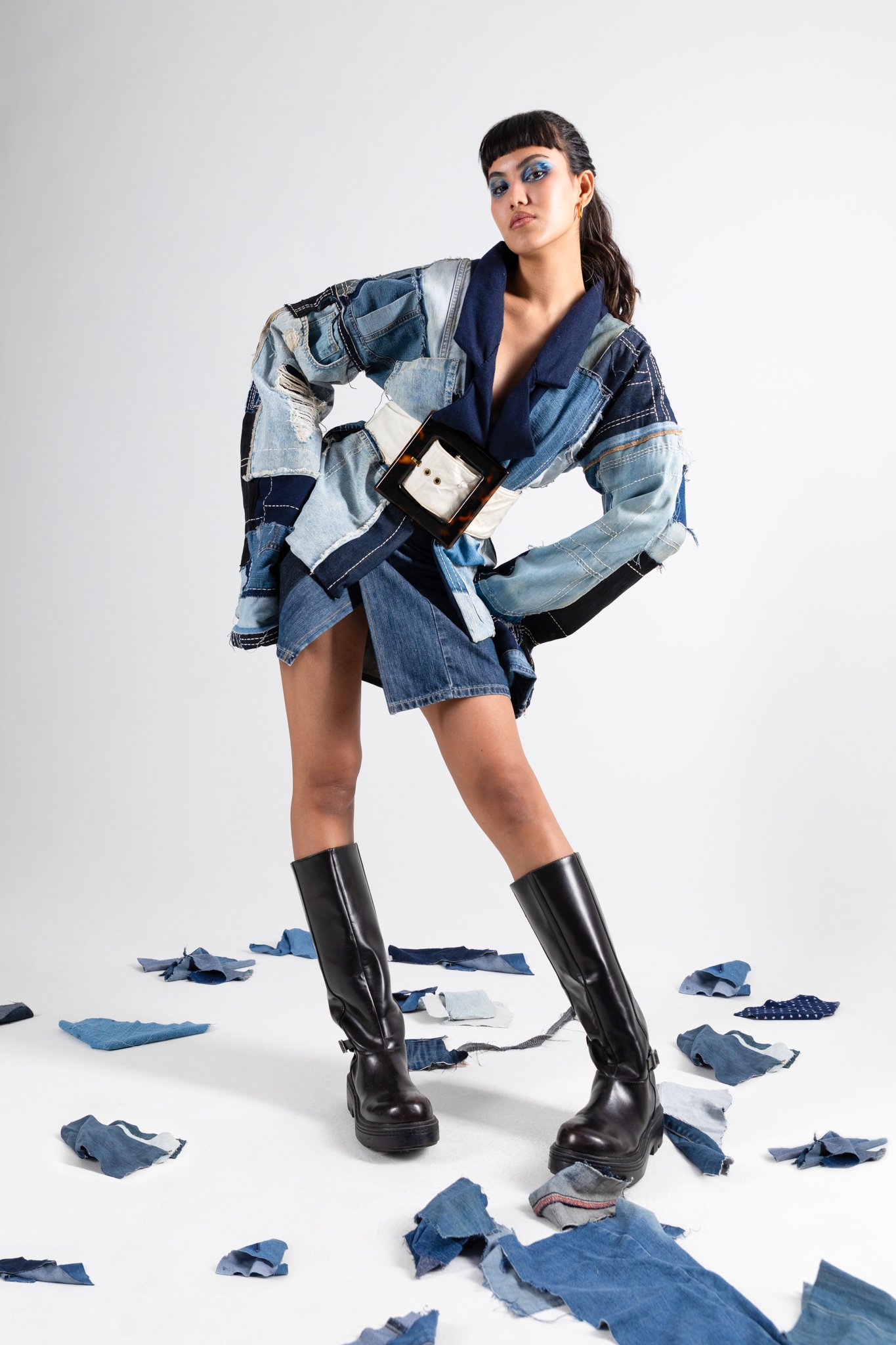Indigo Energy: A Bold Denim Editorial Shoot
From a style perspective, I’ve always had a soft spot for denim. Whether it was my trusty Topshop Joni skinny jeans back in the day (giving away my age a little here!) or more commonly these days, a slouchy pair of Levi’s, there’s something so effortless about pulling on denim and heading out the door. It’s more of a staple in my wardrobe in the UK than Singapore—here, we all tend to break out our jeans and jackets only after a rainstorm cools the island down a few degrees!
Many of you who know me well also know I have a bit of a thing for a denim jacket. (The collection may be getting out of hand, but I’m not mad about it.)
But Here's the Thing…
After becoming more clued-up about the fashion industry’s impact over the past seven years through my work with ZERRIN, my love for denim has been somewhat sobered by its environmental impact. The production of this beloved fabric is shockingly resource-intensive and polluting.
To give you an idea:
→ Over 50,000 tons of synthetic indigo are used each year, along with over 84,000 tons of sodium hydrosulfite—carcinogenic to humans and toxic to wildlife, plants and soil.
→ The dyeing process alone for one pair of jeans can consume up to 113 litres of water (that’s way more than most of us drink in a month).
→ Over the course of its life cycle, a single pair of jeans is estimated to use more than 790 gallons (3,000+ litres) of water—from cotton farming to dyeing and finishing.
And yet, denim remains a wardrobe staple around the world, with billions of new pairs produced every year. This fabric isn’t going anywhere. So the question is: How can we do denim better?
Reimagining Denim’s Future
That question was the inspiration behind this shoot—a creative editorial I put together to explore a future vision for denim.
Shot in studio with the ever-radiant Alexandra Stewart (from NOW Management), the story features a range of upcycled and one-off denim looks sourced from Peyar Rework, styled with pieces like my own jacket from Aligne, a sustainable British brand I love.
We kicked things off with a classic jeans-and-jacket moment, paired with natural makeup and Alexandra’s own Dr. Martens. As the shoot progressed, the looks became bolder—starting with cornflower blue eyeshadow styled with a shredded denim dress, followed by a frilled denim skirt and cotton fabric bralette complemented by soft, smoky eyes. For the final look, we went all out with a high-impact, painterly eye inspired by indigo dye, styled alongside a full patchwork denim jacket and skirt set.
Each makeup look was beautifully conceptualised by Sarah Tan—an absolute artist, through and through!
The Beauty of Reinvention
We shot the series at Studio 2020, one of my favourite rental spaces in Singapore. We also got a bit playful with props—like tossing off offcuts of denim fabric borrowed from Claudia from Restore—to create one of my favourite spontaneous shots from the day.
Its resilience is what makes denim perfect for upcycling. It’s hardy. It ages well. It can be cut, stitched, patched, dyed and distressed over and over—and still come out looking great. Upcycling denim helps us to extend the life of existing garments, bypassing the need to produce virgin fabric and in turn reducing the environmental impact of our clothes. Less water. Fewer pesticides. Lower carbon footprint. And perhaps most beautifully, each piece becomes entirely unique—full of history, texture, and story.
Final Thoughts
This shoot was such a joy to bring to life, not just because of the fashion, but because of what it represents: creativity, circularity, and pushing the boundaries of how we see and style materials that already exist.
Here’s a selection of my favourite final images—and some behind-the-scenes moments too, because they always deserve a spotlight. Not just for the vibes, but for the memories with a great team!
CREDITS
Model: Alexandra Stewart, NOW Management
Hair & Makeup: Sarah Tan
Photography & Direction: Susannah Jaffer
Creative Assistants: Sara Jain & Kaena Sutanu






























